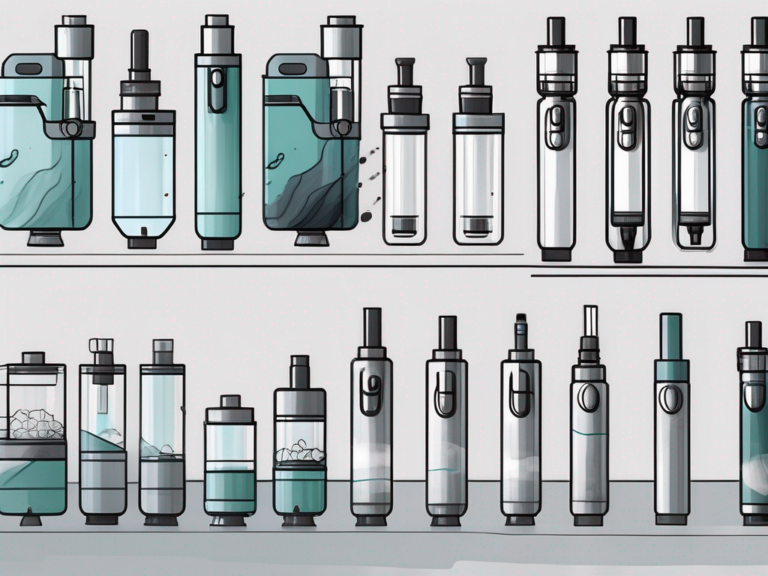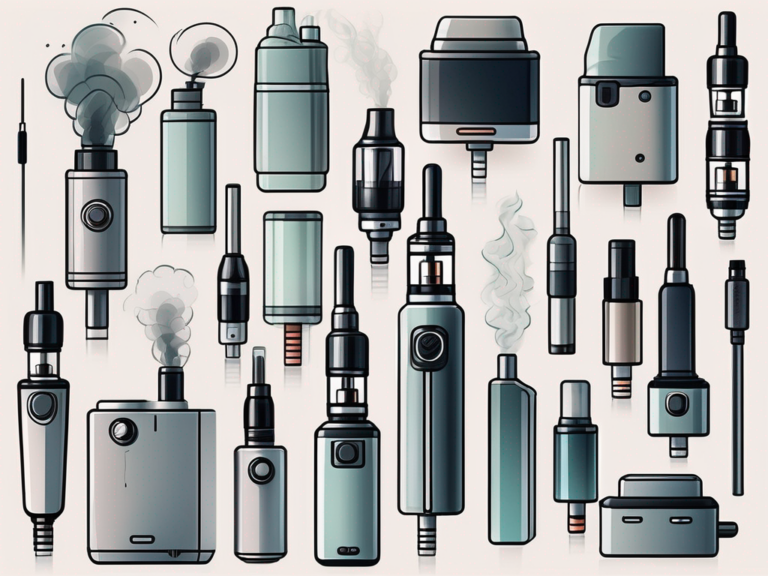how to quit vapes
Quitting vaping can be a challenging journey, but with the right strategies and support, it is an achievable goal. In this article, we will explore various aspects of quitting vapes and provide you with practical tips to overcome this addiction.
Understanding the Addiction
Before embarking on your quitting journey, it is important to understand the nature of nicotine addiction that underlies vaping. Nicotine, a highly addictive substance found in vapes, stimulates the release of dopamine, a neurotransmitter that creates feelings of pleasure and reward. This mechanism reinforces the addiction and makes it difficult to quit.
Delving deeper into the realm of nicotine addiction reveals a multifaceted process that goes beyond mere physical dependence. The intricate dance between nicotine and the brain’s reward system is a key player in the addictive nature of vaping. The rapid release of dopamine not only produces feelings of euphoria but also establishes a powerful link between the act of vaping and a sense of gratification.
The Science Behind Nicotine Addiction
Nicotine addiction involves complex processes within the brain. When nicotine enters the body, it binds to nicotine receptors, leading to the release of dopamine. Over time, the brain adapts to nicotine, and higher doses are required to achieve the same pleasurable effects. This creates a cycle of dependence on nicotine, making it challenging to quit.
Furthermore, the brain’s neuroplasticity comes into play, as it undergoes changes to accommodate the constant influx of nicotine. This rewiring reinforces the addictive behavior, making breaking free from its grasp a formidable task. Understanding these underlying mechanisms can provide insight into the challenges faced during the journey to overcome vaping addiction.
Psychological Aspects of Vaping Addiction
Understanding the psychological aspects of vaping addiction is essential for successful cessation. Many individuals turn to vaping as a coping mechanism for stress, anxiety, or boredom. Identifying these triggers and finding healthier alternatives is vital in breaking the addiction cycle.
Moreover, the emotional ties associated with vaping addiction cannot be overlooked. The ritualistic nature of vaping, intertwined with personal habits and social settings, creates a web of psychological dependencies that can be as compelling as the physical cravings. Unraveling these intricate connections is a crucial step towards reclaiming control over one’s well-being and breaking free from the grip of vaping addiction.
Preparing to Quit Vaping
Before quitting vaping, it is crucial to set yourself up for success by preparing both mentally and practically.
Quitting vaping is a significant step towards better health and well-being. It’s important to approach this journey with a positive mindset and a clear plan of action. By taking the time to prepare yourself adequately, you are already one step closer to achieving your goal of living vape-free.
Setting Realistic Goals
Start by setting realistic and achievable goals. Going cold turkey might work for some, but for others, a gradual reduction approach may be more effective. Evaluate your smoking habits and choose a strategy that works best for you.
Consider keeping a journal to track your progress and celebrate each milestone along the way. Breaking down your ultimate goal into smaller, manageable steps can make the process feel less overwhelming and more attainable.
Identifying Triggers and Coping Mechanisms
Take the time to identify your personal triggers for vaping and develop healthy coping mechanisms to deal with them. Whether it’s finding alternative activities or seeking support from friends and family, having a plan in place will greatly increase your chances of success.
Understanding the situations or emotions that lead you to reach for your vape can empower you to make conscious choices to avoid those triggers. Consider practicing relaxation techniques such as deep breathing or mindfulness to help you navigate moments of temptation.
Strategies for Quitting Vaping
Now that you have prepared yourself for quitting, let’s explore some effective strategies to help you along the way.
Quitting vaping is a significant step towards better health and well-being. It’s important to approach this journey with determination and a clear plan in mind. Understanding the various strategies available can empower you to make the best choice for your quitting process.
Gradual Reduction vs. Cold Turkey
Two common approaches to quitting vaping are gradual reduction and cold turkey. Gradual reduction involves gradually decreasing the amount of nicotine consumed over time until you are vape-free. This method allows your body to adjust slowly to lower nicotine levels, potentially reducing the intensity of withdrawal symptoms. On the other hand, cold turkey involves quitting vaping abruptly, which can lead to a more immediate break from nicotine dependence. Choose the approach that aligns with your preferences and lifestyle, keeping in mind that what works for one person may not work for another.
It’s essential to remember that quitting vaping is a personal journey, and there is no one-size-fits-all approach. Some individuals may find success with gradual reduction, appreciating the incremental progress and reduced shock to the system. Others may prefer the decisiveness of going cold turkey, embracing the challenge head-on. Whichever path you choose, staying committed to your goal is key to long-term success.
Nicotine Replacement Therapy
Nicotine replacement therapy (NRT) can provide a helpful tool for some individuals seeking to quit vaping. NRT products, such as nicotine patches, gum, or lozenges, deliver controlled doses of nicotine to help manage withdrawal symptoms. By gradually reducing nicotine intake through these products, individuals can ease the transition away from vaping. Consult with a healthcare professional to determine if NRT is suitable for you, as they can provide guidance on the proper usage and potential side effects of these products.
Remember, quitting vaping is a journey that requires patience and perseverance. It’s okay to seek support from friends, family, or healthcare professionals along the way. By exploring different strategies and finding what works best for you, you are taking a proactive step towards a healthier lifestyle.
Dealing with Withdrawal Symptoms
Withdrawal symptoms are an expected part of the quitting process. Understanding and managing these symptoms can greatly improve your chances of staying vape-free.
When embarking on the journey to quit vaping, it’s essential to be prepared for the various challenges that may arise. Withdrawal symptoms can manifest differently for each individual, ranging from physical discomfort to emotional turbulence. By arming yourself with knowledge and strategies to cope with these symptoms, you can navigate this transitional period with greater ease and resilience.
Physical Symptoms and How to Manage Them
Physical symptoms of nicotine withdrawal can include headaches, irritability, and difficulty concentrating. Engaging in regular exercise, staying hydrated, and getting sufficient rest can help alleviate these symptoms. Additionally, deep breathing exercises and relaxation techniques can provide relief.
It’s important to remember that the body is undergoing a significant adjustment during this time. As nicotine leaves your system, it is not uncommon to experience fluctuations in energy levels and mood. By prioritizing self-care practices such as maintaining a balanced diet and engaging in activities that promote relaxation, you can support your body through this transition.
Emotional Challenges and Support Systems
Quitting vaping can also lead to emotional challenges such as mood swings or anxiety. Building a strong support network of friends, family, or support groups can provide invaluable assistance during this time. Seeking professional help, such as counseling, can also be beneficial.
Emotional well-being is a crucial aspect of the quitting process. As you navigate the emotional ups and downs that may accompany nicotine withdrawal, remember that it is okay to seek help and lean on others for support. By fostering open communication with your loved ones and exploring healthy coping mechanisms, you can better manage the emotional challenges that arise on your journey to becoming vape-free.
Staying Vape-Free
Sustaining a vape-free lifestyle requires ongoing effort and commitment. Adopting healthy habits and maintaining a supportive environment will contribute significantly to your success.
Quitting vaping is a decision that can positively impact your health and well-being in numerous ways. By choosing to live vape-free, you are taking a crucial step towards a healthier future. It’s important to recognize the benefits of this choice, such as improved lung function, decreased risk of respiratory issues, and overall better cardiovascular health.
Developing Healthy Habits
Replace the habit of vaping with healthier alternatives. Engaging in physical activity, practicing mindfulness or meditation, and pursuing hobbies can help occupy your time and keep cravings at bay. Embrace a healthier lifestyle by incorporating nutritious foods and staying hydrated.
Exploring new activities and interests can also be a rewarding part of your journey to staying vape-free. Consider trying out different forms of exercise, such as yoga, swimming, or cycling, to not only improve your physical health but also boost your mood and mental well-being. Additionally, discovering creative outlets like painting, writing, or playing a musical instrument can provide a positive distraction and outlet for self-expression.
Maintaining a Support Network
Surround yourself with individuals who support your decision to quit vaping. Share your progress, challenges, and successes with them. Their encouragement and understanding will serve as a constant reminder of your determination to stay vape-free.
Building a strong support network is essential in navigating the ups and downs of quitting vaping. Consider joining support groups either in person or online to connect with others who are on a similar journey. These communities can offer valuable insights, tips, and encouragement to help you stay motivated and committed to your vape-free lifestyle.
Quitting vaping is a personal journey that requires patience, determination, and support. By understanding the addiction, preparing for quitting, utilizing effective strategies, and managing withdrawal symptoms, you are setting yourself up for success. Remember, you are not alone in this journey, and reaching out for support is a sign of strength. Stay committed, embrace healthier habits, and celebrate each milestone along the way. You can do this!






